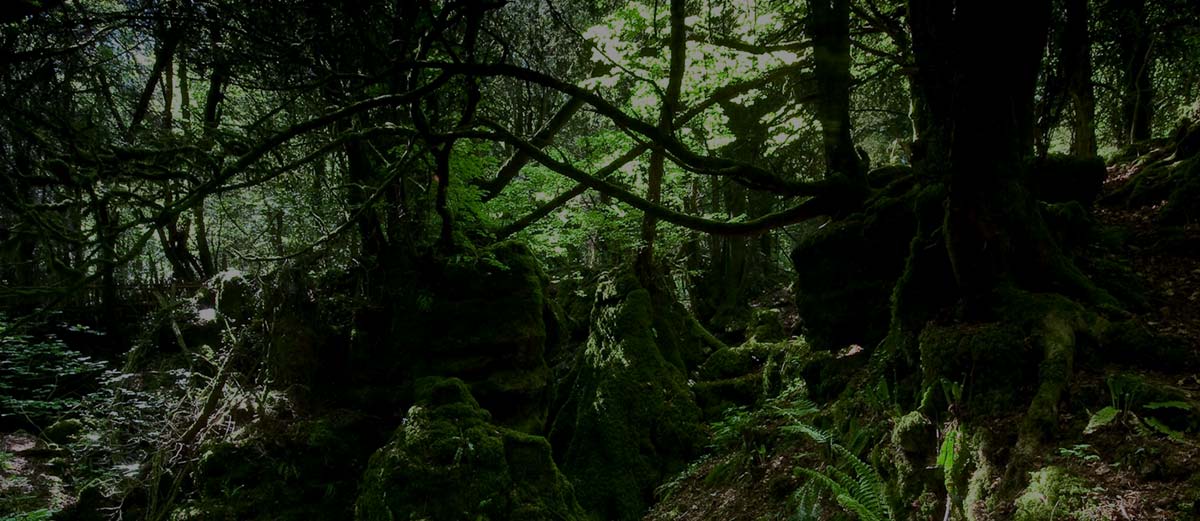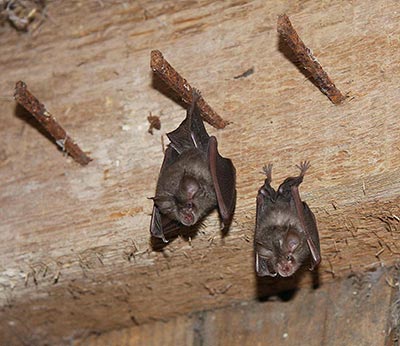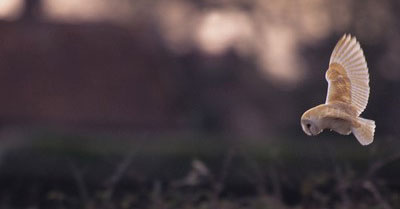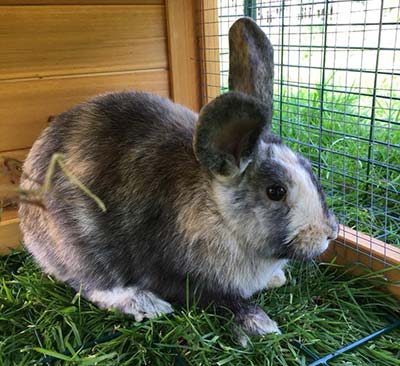
When the sun goes down and darkness falls, Puzzlewood continues to bristle with life.
Deer
Deer have been in the Forest of Dean for many centuries. As far back as Norman times, the Forest was a royal hunting area. The predominant species is Fallow deer, although Muntjac and Roe deer are also present in smaller numbers. Deer live in small herds and live in woodland with clearings.
Bats

We’ve mentioned bats before and the site of them flying around at dusk is always amazing. We’re very proud to be a Site of Special Scientific Interest due to the mines and caves below Puzzlewood – they provide a hibernation roost for Lesser Horseshoe bats, the largest in the UK. The bats feed mostly in woodland, so Puzzlewood is an excellent habitat. We’re ensuring that that continues by improving our hedges to create ‘super highways’ that help bats navigate and an orchard that will provide a rich hunting ground, work that is being carried out in partnership with Natural England.
Foxes
If you live in an urban area, you may well be used to seeing foxes boldly crossing the road, raiding bins or wandering through your garden in broad daylight. The foxes the frequent Puzzlewood are somewhat more wary and tend to be most active around dawn and dusk. Foxes feed on rabbits and small rodents, but they’ll also root out insects and eat fruit as well. They will also prey on gamebirds and chickens. Foxes have a very distinctive call, females screech to let nearby males know that they’re ready to mate.
Badgers
Not the most popular creature in our gardener Jane’s view because of the damage they can do to our flowerbeds! The badger’s favourite habitat is woodland. Badgers live in groups of up to seven. Sleeping in a sett during the day, badgers emerge at night to forage, feeding on earthworms, rabbits, rodents, even apples and acorns (and it appears earthing up flower beds too!). They are particularly tidy animals, they keep their setts very clean and always toilet outside.
Owls

Along with many other birds, Puzzlewood provides a home for owls. Depending on the species, owls are either nocturnal or crepuscular, which means being active at dawn and dusk. They hunt for small mammals, such as voles, shrews and mice (those cute little mice that are so often spotted by our visitors!) – the pellets that they later expel contain all the bits an owl can’t digest, including fur, bones and teeth, it’s a fascinating but slightly grizzly find to make during a walk!
Hedgehogs
Much loved and, sadly, in rapid decline, hedgehogs spend much of their lives sleeping – hibernating through the winter months and only coming out at night the rest of the year. They are surprisingly noisy and can be identified by their snuffling noises. Hedgehogs are solitary creatures and will only come together to mate. Woodland is an ideal habitat. Unfortunately, urban hedgehogs are having a tough time as gardens become less suitable. If you want to encourage hedgehogs into your garden, hedges rather than walls and fences and plenty of plant cover are what you need.
Rabbits

If you’ve seen Watership Down, you’ll know that rabbits live in warrens and are very social creatures. They’ll create warrens wherever there are hedges and woodland to provide cover and shelter. Rabbits are herbivores and survive on grass, weeds and will also gnaw at tree bark. Whilst rabbits can’t be considered to be nocturnal, they tend to graze most at dusk, which is when the light doesn’t suit predators such as owls and foxes. We think they might also be to blame for eating Jane’s flowers! You might not spot any wild rabbits, but do pay a visit to Ginger and Pickle, our cute resident rabbits.







